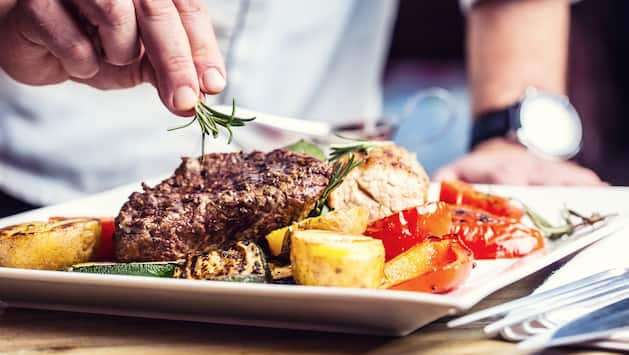Carbohydrates and sugar in particular, but also fats, are often targeted when looking for the culprit for excess pounds. However, some foods are wrongly blamed.
It should come as no surprise that fruit is full of healthy vitamins. Anyone who wants to reduce their weight, however, is repeatedly warned against fruit – after all, fructose is also sugar and is therefore magnetically attracted to the hips
Not to be neglected, however, are the vital vitamins and nutrients that you get with an apple or a bowl of strawberries.
If you still want to eat a low-sugar diet, you can rely on honeydew melons, tangerines or papaya. These fruits contain less than 1.3 grams of fructose per 100 grams and are still bursting with healthy ingredients.
In times of low-carb diets and vegetable noodles made from zucchini or carrots, classic pasta from Italian cuisine doesn’t have it easy. A portion of spaghetti has around 200 kcal and contains a full 45 grams of carbohydrates, which puts many people off.
However: Whole grain products in particular keep you full for a long time and provide a lot of fiber. The lower glycemic index prevents rapid rollercoaster rides in blood sugar levels.
Plus point: This prevents cravings! So if you feel like eating soul food, you can treat yourself to a portion of spaghetti bolognese with a clear conscience.
100 grams of potatoes contain 15 g of carbohydrates. And yet they can help you lose weight: Potassium regulates the water balance, blood pressure and helps transmit impulses to muscles and nerves.
The fiber ensures that you feel full for a long time and keeps cravings for sweets at bay. High-quality protein and B vitamins as well as vitamin C complete the nutrient mix.
The potato provides ideal fuel for the body.
Attention, fat trap?! Nuts are also often avoided as part of a more conscious diet. Hazelnuts, for example, consist of 65 percent fat. And that goes hand in hand with a whopping 650 kcal per 100 grams.
But nuts still don’t deserve their reputation as secret fattening foods. Because they curb the feeling of hunger and lower our blood sugar level. The cardiovascular system and cell membranes benefit from the unsaturated fatty acids it contains.
So a handful of nuts is a healthier snack than grabbing a bag of crisps.
The popularity of the avocado is not waning – despite its poor environmental balance. However, critics vehemently condemned the green butterfruit as too fat and bad for the figure. That’s right, with 15 grams of fat and 160 kcal per 100 grams of pulp, it’s a full-grown heavyweight. But the vegetable fats have it all! The monounsaturated and polyunsaturated fatty acids have a positive effect on cholesterol levels. In addition, avocados contain a very healthy mix of many vital substances that the body needs.
Some of these even need fat to be absorbed by the body. That’s why avocados can keep their place on the breakfast table with a clear conscience.
A healthy diet is about balance, even too much of supposedly healthy food can be harmful. If you snack on a large mountain of walnuts every day, it will quickly make itself felt on the scales.
Consumed in moderation, the above foods can complete a balanced but healthy diet.
The original of this post “Five foods don’t make you fat” comes from Bunte.de.
